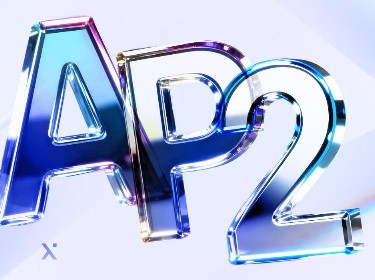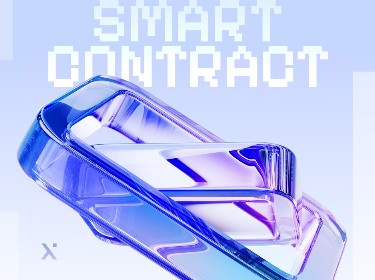Educational technology is constantly changing and adapting to new realities. Institutions are trying to attract students from across the globe. Blockchain technology can help bring their systems and processes in line with the students’ expectations.
Blockchain’s potential use in the K-12 school system is not the first for education overall. Higher education has already explored the use of blockchain, for example, Holberton School of Software Engineering is among the first adopters of this technology. Every Holberton digital certificate is issued in a secure environment, with the certificate’s content sealed and tamper-proof.
The impact of this technology on the education system seems to be promising. But will it influence the current methods of K-12 record storage and tracking? Simple tasks like sharing a school transcript could become a huge deal involving a significant amount of time and money under the current document management systems.
In the digital world, similar transactions powered by cryptocurrency are executed much more easily. And this is not the only advantage of blockchain in education. Read on to find out about the benefits and use cases of this emerging technology aimed to improve the K-12 educational system.
What is blockchain?
Since the inception of Bitcoin in 2009, blockchain technology has proven to be a catalyst across a wide variety of industries. Blockchain represents a chain of blocks with the “block” symbolizing digital information, and the “chain” indicating that these blocks are linked into immutable storage.
It is a permanent, digital public ledger with information recorded in a way that makes it almost impossible to change, hack, or cheat the system. Everyone who is part of the blockchain network has a full copy of the chain and can view the complete record of transactions in the database.
How does blockchain work?
Every member on the blockchain has their own node that allows them to participate in events within the network and make transactions. In order to create blocks, the users need to agree that a transaction is valid through a consensus algorithm.
An invalid transaction would easily be traced to the node that made it. It is nearly impossible to hack the blockchain because hacking would require changing the transaction in the digital ledger for each node on the network.
Because of its essence, blockchain technology is emerging as a new way to store, confirm, secure, and trust digital information of private and public schools across the whole K-12 educational system.
Ways blockchain can be used in school education
![]()
Blockchain-based ledger technologies can have a definite positive impact on school education and provide many benefits, some of which are discussed below.
Transcripts
Quite a few schools have already begun to experiment with blockchain as a means to authenticate academic credentials like degrees, certificates, and transcripts. The main driver for this initiative is to avoid having to deal with counterfeit academic credentials. Blockchain makes it harder to forge these credentials.
Badges
A person’s typical resume contains their formal educational qualifications and additional information that could be relevant to employers, like foreign language skills, technical knowledge, or specific abilities not necessarily related to the person’s profession. Some of these skills, however, are not easy to verify.
The person could get an expert third party to verify these skills and grant them a certificate or badge. Storing these credentials on a blockchain increases its validation and proves that the person indeed has the skills they are referring to. Services like Open Badge Passport are the first step in this direction.
Student records
There is an increasing interest in providing platforms through which students can “own” and control records of their academic and extra-curricular achievements. In addition to encrypting credentials, smart contract development services can help implement blockchain that offers means for documenting and tracking the range of a student’s learning experiences.
Identity
With the proliferation of learning apps and services, identity management is becoming crucial in education. Platforms like uPort help users carry their identity around with them, uploaded to the network, and easily accessible. Identity management is very important in education. It enables schools to:
- Facilitate effective access to numerous systems such as billing, canteen usage, checking out books from the library, etc.
- Satisfy increased state and federal regulatory requirements.
- Offer the latest IT systems to staff and students.
- Keep educational credentials secure.
Instead of storing the student identity document, the blockchain stores information about that document. Using blockchain, students can identify themselves online while maintaining control over the storage and management of their personal data.
Attendance and assignment completion tracking
Blockchain secures student data and improves the information retrieving process for students’ attendance, assignment completion tracking, etc. As blockchain networks save all the information about students and their achievements, it is possible to track their progress in learning and other activities. In the long run, this will guide educational institutions to make necessary changes in the educational process.
Infrastructure security
Currently, educational institutions are faced with the challenge to protect their networks from hackers. As already mentioned, blockchain technology offers a secure network and it is impossible to fake the information stored in the blockchain. Companies like Xage are using blockchain’s tamper-proof ledger that protects every element, including new and legacy systems, and secures every interaction, enabling dynamic data security.
Efficient data storage
Educational institutions these days store more data than ever before. The distributed ledger technology (DLT) cloud storage offers safer and potentially cheaper alternatives for storing and retrieving data. For example, Filecoin is a high-profile crypto project that rewards the hosting of files. It connects the world with a new storage model, creating hyper-local and efficient storage.
Simplification of records management
Blockchain technology in K-12 eliminates paper-based processes and simplifies record management. It is more than suitable for records such as students’ certificates, degrees, transcripts. In addition to encrypting records, blockchain offers a means for documenting and tracking the breadth of a student’s learning experiences.
Next-Generation library platform
Blockchain is seen as a foundation in the next-generation library platform. It offers a much more efficient and easier way to accumulate, keep track of, and store information. That is a huge advantage which could be used to improve library and information services in schools. For example, San Jose State University School has received a substantial grant to work on the potential of blockchain technology for the information profession.
Barriers for mass adoption of blockchain in K-12
![]()
As an emerging technology, blockchain adoption presents numerous challenges for its complete integration. It requires wide-ranging business process changes. The main barriers to mass adoption of blockchain in schools are discussed below.
Legacy solutions
Most schools in the US and Europe are still far from the concept of blockchain record management. These institutions still rely on centralized document management systems that store information locally. Another scope of educational systems is tied to paper-based and manual systems. It’s quite a challenge for the staff to transition from these types of solutions and for schools to invest their funds into the adoption of blockchain technologies.
Expense
As briefly mentioned, any new technology needs the investment of time and money, and blockchain technology is no exception. It would involve extensive and costly training of staff to understand blockchain use. While it might be easier for higher education to transition, public schools could find the expenses overwhelming.
Learning curve
Blockchain’s learning curve is steep. Undoubtedly, implementation of the technology initially raises significant technological, and operating level hurdles in education. Though, introducing blockchain can be transformative for the educational system. For a common man, the concept behind the technology is still very elusive. The problem is that many don’t trust blockchain technology, which makes promoting learning and investment more difficult.
Decentralized power
Private and public schools have traditionally operated under the custom of the board governance, which is unique to each institution. Blockchain by its scope increases the visibility of each transaction on campus and dematerializes the intermediary, which is represented by the institution. This process strips down the power of the institutions to which they are so used to.
Blockchain Schools and Training
![]()
Online learning has become very popular with millions of students around the world engaged in different types of simultaneous learning. There is one particular type of online learning that is creating a perfect storm and these are online blockchain schools.
The past few years have seen interest in blockchain technology virtually explode. Numerous companies such as IBM, Unilever, Walmart, British Airways, Visa, Ford, Siemens, DHL, and many more are scrambling to adopt blockchain technology into their operations.
There are very few high schools that offer blockchain courses prepared by qualified professionals. Attending an online blockchain academy is the better option. For example, Ivan on Tech Academy offers numerous blockchain courses for all ages. Best of all, no prior knowledge is necessary in order to start learning about blockchain and blockchain programming, and it offers courses with real-world success stories.
Bottom Line
Blockchain technology is the breakthrough technology of the 21st century. As it has no server that plays the role of an intermediary between users who exchange messages, money, or data, the technology opens possibilities for the K-12 educational system.
Blockchain has the potential to improve the educational system in many ways. The technology is perfect for secure information storage, sharing, and networking. With the help of this advanced system, many processes can become faster, easier, and safer. It will smoothen the process of credentialing, copyright protection, and efficient communication.
This seems to be the strongest catalyst to ensure that students’ credentials will be protected and authentic, payments will be more secure, and intellectual property rights will increase in importance and value. All the while, the students’ curriculum will transform them into witty, successful individuals. Ask our experts at PixelPlex for a deeper insight into how blockchain could be introduced in your institution.




